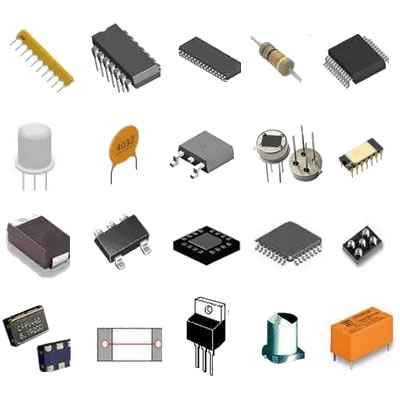Common Production Processes for Load Resistors
I. Introduction
A. Definition of Load Resistors
Load resistors are essential components in electrical circuits, designed to provide a specific resistance to the flow of electric current. They are used to simulate loads in various applications, ensuring that circuits operate correctly and safely. By dissipating electrical energy as heat, load resistors help to manage voltage levels and protect sensitive components from damage.
B. Importance of Load Resistors in Electrical Circuits
In many electronic applications, load resistors play a critical role in testing and validating circuit designs. They are commonly used in power supplies, amplifiers, and other electronic devices to ensure that the system can handle the expected load. Additionally, load resistors are vital in applications such as braking systems in electric vehicles and in the testing of power electronics, where they help to absorb excess energy.
C. Overview of the Production Process
The production of load resistors involves several key processes, from design and material selection to manufacturing and quality assurance. Understanding these processes is crucial for ensuring that load resistors meet the required specifications and performance standards.
II. Types of Load Resistors
A. Fixed Load Resistors
Fixed load resistors have a predetermined resistance value that does not change. They are widely used in applications where a constant load is required, such as in power supply testing and circuit simulation.
B. Variable Load Resistors
Variable load resistors, or rheostats, allow users to adjust the resistance value according to their needs. This flexibility makes them ideal for applications like tuning circuits and adjusting power levels in various devices.
C. Specialty Load Resistors
Specialty load resistors are designed for specific applications, such as high-power or high-frequency environments. These resistors may have unique characteristics, such as enhanced heat dissipation or specific impedance values.
D. Applications of Different Types
The choice of load resistor type depends on the application requirements. Fixed resistors are suitable for consistent loads, while variable resistors offer adaptability. Specialty resistors are essential in niche applications where standard resistors may not suffice.
III. Materials Used in Load Resistor Production
A. Conductive Materials
1. **Carbon Composition**: Carbon composition resistors are made from a mixture of carbon and a binding material. They are cost-effective and provide stable resistance values, making them suitable for various applications.
2. **Metal Film**: Metal film resistors are constructed using a thin layer of metal deposited on a ceramic substrate. They offer high precision and stability, making them ideal for applications requiring accurate resistance values.
3. **Wirewound**: Wirewound resistors consist of a wire wound around a core. They are capable of handling high power levels and are often used in applications where heat dissipation is critical.
B. Insulating Materials
1. **Ceramic**: Ceramic materials are commonly used for their excellent insulating properties and thermal stability. They are often employed in high-temperature applications.
2. **Epoxy Resins**: Epoxy resins provide good insulation and mechanical strength, making them suitable for coating and encapsulating load resistors.
C. Heat Dissipation Materials
1. **Aluminum**: Aluminum is frequently used in heat sinks due to its lightweight and excellent thermal conductivity. It helps dissipate heat generated by load resistors.
2. **Copper**: Copper is another material known for its superior thermal conductivity. It is often used in high-performance applications where efficient heat dissipation is crucial.
IV. Common Production Processes
A. Design and Prototyping
1. **Electrical Specifications**: The first step in the production process involves defining the electrical specifications of the load resistor, including resistance value, power rating, and tolerance.
2. **Mechanical Design**: Mechanical design considerations include the physical dimensions, mounting options, and thermal management features of the resistor.
B. Material Selection
1. **Criteria for Material Choice**: Selecting the right materials is critical for ensuring the performance and reliability of load resistors. Factors such as electrical conductivity, thermal properties, and cost are considered.
2. **Sourcing and Quality Control**: Manufacturers must source high-quality materials from reputable suppliers to ensure that the final product meets industry standards.
C. Manufacturing Techniques
1. **Cutting and Shaping**:
- **Laser Cutting**: Laser cutting technology is used to achieve precise shapes and dimensions for resistor components.
- **CNC Machining**: Computer Numerical Control (CNC) machining allows for high-precision shaping of materials, ensuring consistency in production.
2. **Assembly Processes**:
- **Soldering**: Soldering is a common method for joining components together, ensuring electrical connectivity and mechanical stability.
- **Welding**: In some cases, welding techniques are employed to create strong, permanent connections between components.
3. **Coating and Finishing**:
- **Surface Treatments**: Surface treatments enhance the durability and performance of load resistors, protecting them from environmental factors.
- **Protective Coatings**: Coatings are applied to resistors to improve their resistance to moisture, chemicals, and mechanical stress.
D. Testing and Quality Assurance
1. **Electrical Testing**: Each load resistor undergoes rigorous electrical testing to verify its resistance value, power rating, and overall performance.
2. **Thermal Testing**: Thermal testing ensures that the resistor can handle the heat generated during operation without failure.
3. **Reliability Testing**: Reliability testing simulates long-term use to identify potential failure modes and ensure that the resistor will perform consistently over time.
V. Automation in Load Resistor Production
A. Role of Automation in Efficiency
Automation plays a significant role in enhancing the efficiency of load resistor production. Automated processes reduce human error, increase production speed, and ensure consistent quality.
B. Use of Robotics in Assembly
Robotic systems are increasingly used in the assembly of load resistors, allowing for precise placement and soldering of components. This technology not only speeds up production but also improves the accuracy of the assembly process.
C. Impact on Quality Control
Automation facilitates real-time monitoring of production processes, enabling manufacturers to identify and address quality issues promptly. This proactive approach to quality control helps maintain high standards throughout the production cycle.
VI. Environmental Considerations
A. Sustainable Material Sourcing
Manufacturers are increasingly focusing on sustainable material sourcing to minimize their environmental impact. This includes using recycled materials and selecting suppliers who adhere to environmentally friendly practices.
B. Waste Management in Production
Effective waste management strategies are essential in load resistor production. Manufacturers implement recycling programs and waste reduction initiatives to minimize their ecological footprint.
C. Compliance with Environmental Regulations
Adhering to environmental regulations is crucial for manufacturers. Compliance ensures that production processes are safe for workers and the environment, promoting sustainability in the industry.
VII. Future Trends in Load Resistor Production
A. Advances in Materials Science
Ongoing research in materials science is leading to the development of new materials with enhanced properties, such as improved thermal conductivity and resistance stability. These advancements will enable the production of more efficient load resistors.
B. Innovations in Manufacturing Techniques
Innovative manufacturing techniques, such as additive manufacturing (3D printing), are beginning to emerge in the production of load resistors. These methods offer greater design flexibility and the potential for reduced material waste.
C. The Role of Smart Technology
The integration of smart technology into load resistor production is expected to enhance monitoring and control processes. Smart sensors and IoT devices can provide real-time data on production efficiency and product performance.
VIII. Conclusion
A. Summary of Key Points
Load resistors are vital components in electrical circuits, and their production involves a series of well-defined processes. From material selection to manufacturing techniques and quality assurance, each step is crucial for ensuring the performance and reliability of these components.
B. The Importance of Continuous Improvement in Production Processes
As technology advances, manufacturers must continuously improve their production processes to stay competitive. Embracing automation, sustainable practices, and innovative materials will be key to achieving this goal.
C. Final Thoughts on the Future of Load Resistor Manufacturing
The future of load resistor manufacturing looks promising, with ongoing advancements in materials science and manufacturing techniques. By focusing on quality, efficiency, and sustainability, manufacturers can meet the evolving demands of the electronics industry and contribute to a more sustainable future.





